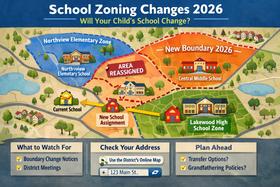For the 2025-26 school year, there is 1 public preschool serving 862 students in 30650, GA.
Public preschools in zipcode 30650 have a diversity score of 0.55, which is less than the Georgia public preschool average of 0.72.
Minority enrollment is 37% of the student body (majority Black), which is less than the Georgia public preschool average of 65% (majority Black).
Best 30650, GA Public Preschools (2025-26)
School
(Math and Reading Proficiency)
(Math and Reading Proficiency)
Location
Quick Facts
Rank: n/an/a
993 East Ave
Madison, GA 30650
(706) 752-4700
Madison, GA 30650
(706) 752-4700
Gr: PK-2 | 862 students Student-teacher ratio: 14:1 Minority enrollment: 37%
30650, Georgia Public Schools (Closed)
School
Location
Quick Facts
Morgan County Crossroads (Closed 2012)
Alternative School
1551 Bethany Rd
Madison, GA 30650
(706) 342-5041
Madison, GA 30650
(706) 342-5041
Frequently Asked Questions
How many public preschools are located in 30650, GA?
1 public preschools are located in 30650, GA.
What is the racial composition of students in 30650?
30650 public preschools minority enrollment is 37% of the student body (majority Black), which is less than the Georgia public preschools average of 65% (majority Black).
Recent Articles

Public School Open House & Enrollment Season Guide for Parents
Learn what to ask at a public school open house during enrollment season, from academics to safety, to choose the right school for your child.

School Zoning Changes 2026: How Assignments May Shift
School Zoning Changes 2026 could affect your child’s school assignment. Learn how zoning works, what is changing, and how families can prepare.

School Vouchers: Updated Pros and Cons (2025 Review)
Comprehensive 2025 analysis of school vouchers, weighing benefits and challenges for families, funding, outcomes, and policy directions.
